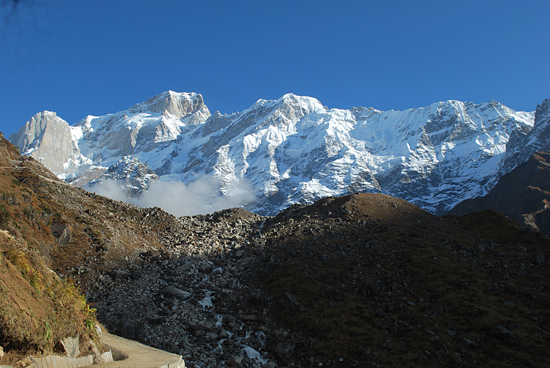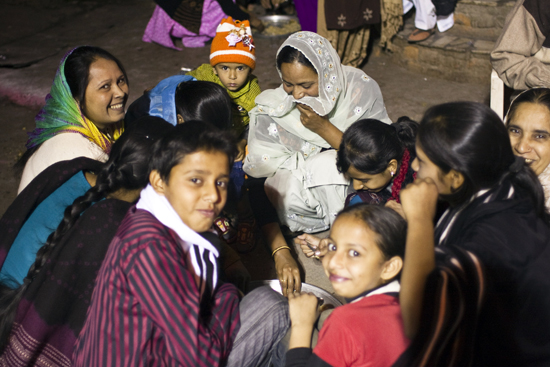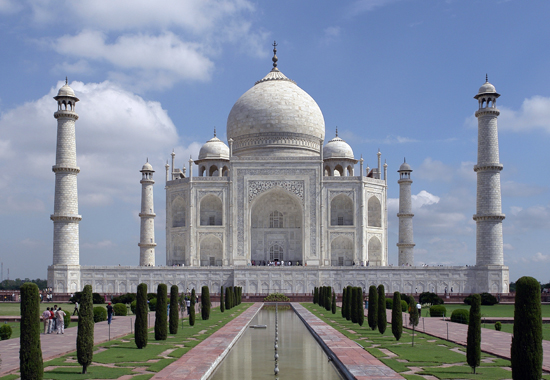Country Snapshot: Country Snapshot
Land/Geography/Regions
India is a country in South Asia that occupies most of the Indian subcontinent. Bordered by Pakistan, China, Nepal, Bhutan, Bangladesh, and Myanmar, India is the world’s seventh largest country. It is a large peninsula with more than 7,400 kilometers (4,600 miles) of Indian Ocean coastline. The Lakshadweep Islands off the country’s southwest coast, as well as the Islands of Andaman and Nicobar in the Andaman Sea, are part of its territory.
The northern border of mainland India is primarily defined by the Himalaya Mountains and Hindu Kush mountains. The country’s highest mountain is Kanchenjunga, towering at over 8,500 meters (28,000 feet) tall. Just south of the Himalayas is the Indo-Gangetic Plain, which is home to some of India’s most significant rivers that flow down from the Himalayas. These include the Indus River and Ganges River.
The western border of India is largely defined by the Karakoram mountain range. In the country’s northwest are the Punjab Plains and Thar Desert. The northeast is home to the Chin Hills and Kachin Hills. These heavily forested low mountain ranges form the border with Myanmar. Central and southern India is covered by the expansive Deccan Plateau. This region is flanked by two coastal mountain ranges known as the Eastern and Western Ghats. India’s landscape also includes thousands of lakes and rivers.
People and Culture
India is the second most populated country in the world. The vast majority of the population are ethnic Indians, which are divided into two main groups. Indo-Aryans are mostly a heterogenous ethnic group from North India that is genetically deviated from the Dravdians of South India. The Indo-Aryans dominate the population of India, and subgroups include Punjabi, Hindi, Kashmiri, Konkani, Bengali, and Marathi people. On the other hand, the Dravidian group encompasses Telugu, Tamil, Tulu, Malayali, and Kannadiga peoples.
India’s constitution officially recognizes 22 languages. The two primary languages align with the population: Indo-Aryan and Dravidian. The most commonly used languages include Hindi and Tamil. English also is widely spoken. It is estimated that there are more than 100 languages spoken in India in addition to the thousands of different dialects used.
Hinduism is the most popular religion in India. In addition, there is a substantial Muslim population. Less common religions include Sikhism, Buddhism, Jainism, and Christianity.
India has a complex, regionalized culture. There are a huge number of distinct groups and communities throughout the country who all maintain distinct cultures. In general, Indians are spiritual people. They have a strong sense of community and support one another. Food is central to celebrations, which are central to the culture. Indians are known to be great hosts, as they are exceptionally generous and excited to share their rich culture.
History
The earliest human remains found in India date to 30,000 years ago. Evidence of permanent structures date to 6500 BCE, and around 2000 BCE the first Hindu scriptures appeared in the Gangetic Plain. As Indo-Aryan groups migrated to the region, Indigenous groups spread out across the Indian subcontinent. Chiefdoms and small kingdoms grew across the region. Buddhism became popular alongside Hinduism. For centuries, India remained largely separated and the deep cultural differences still evident in the country began to form.
By 16th century CE, various nomadic Muslim tribes had moved into the area, and the region began to unify under Islam. Eventually, these Muslim leaders were forced out by the powerful warriors of the Mughal Empire, which ruled in a way that allowed for regional differences to endure. Localized identity again became popular, and the popularity of Islam quickly declined.
Eventually, individual groups became powerful within India and the Mughal Empire lost influence. The British recognized the commercial value of the country and used their superior military to gain control of it. India finally gained its independence in 1947. Upon leaving, the British partitioned the land creating both India and Pakistan. The division caused violent upheaval and left many displaced. It created an air of mistrust between India and Pakistan that continued into the 21st century. While India has mostly enjoyed political stability since achieving independence, constant border disputes with Pakistan have been disruptive.
Climate and Biodiversity
India primarily has a tropical climate. The majority of peninsular India is warm throughout the year. The country sees two annual monsoons—one in the summer and one in the winter—that bring huge amounts of water to the region in a very short amount of time. The Himalaya mountains in the north have much colder climates at higher altitudes. However, the mountains block cold winds from Central Asia causing the plains just south of the Himalayas to stay fairly warm throughout the year.
India is categorized as one of the world’s 17 megadiverse countries. It has tropical, coniferous, and deciduous forests. There are grasslands, shrublands, savannas, wetlands, and marshes. The country is home to dozens of endemic species including Sangai deer, Asiatic lion, Lion-tailed macaque, Kashmir stag, Pygmy hog, Malabar civet, Namdapha flying squirrel, Golden langur, Indian Giant squirrel, and the Madras hedgehog. Some large animals common in India are river dolphins, tigers, lions, snow leopards, elephants, rhinoceroses, crocodiles, sloth bears, water buffalos, and Indian wolves. The country’s rivers are home to dozens of species of freshwater fish and amphibians. The Indian Ocean surrounding India is home to coral reefs, reef fish, rays, cetaceans, and hundreds of species of invertebrates.
Economy
The economy of India has proven to be robust and diverse. The country’s official currency is the rupee. Top exports include oil, diamonds, machinery, vehicles, chemicals, pharmaceuticals, electrical equipment, iron, steel, cotton, and textiles.
India has a rapidly growing services sector. It offers software services and technology outsourcing options. The country’s largest private-sector employer is the information technologies sector. A large portion of the population is employed in the agricultural industry, or various supporting industries. Areas where employment continues to grow are insurance, financial services, energy, and tourism.
Government
The territory of India is divided into 29 states and seven union territories with New Delhi serving as the capital. The country maintains a federal parliamentary republic. This means the government serves as a central power, while individual states maintain a significant degree of independent governing ability.
A president serves as a ceremonial head of state after being indirectly elected by an electoral college that contains the members of the Parliament of India and legislative assemblies of its states and territories. The president serves a renewable five-year term. Presidents are responsible for appointing a prime minister to serve as the head of government.
The bicameral parliament consists of a lower house, Lok Sabha (House of the People), and a higher house, Rajya Sabha (Council of States). Members of both houses are directly elected, as are members of the legislative assemblies of the states and territories.
The highest court in the independent judiciary of India is the Supreme Court. It also serves as a constitutional court, able to rule on the legality of proposed legislation. Other courts include the High Courts of each state, as well as state District Courts, Magistrates of Second Class, and Civil Judges.
Article written for World Trade Press by Taylor Holloran.
Copyright © 1993—2024 World Trade Press. All rights reserved.

 India
India 



